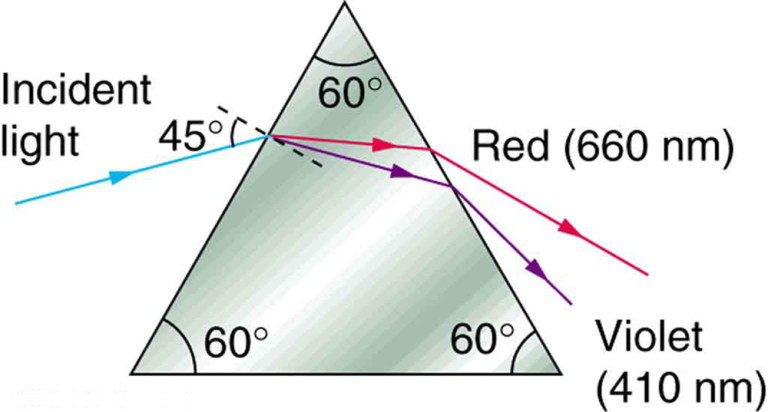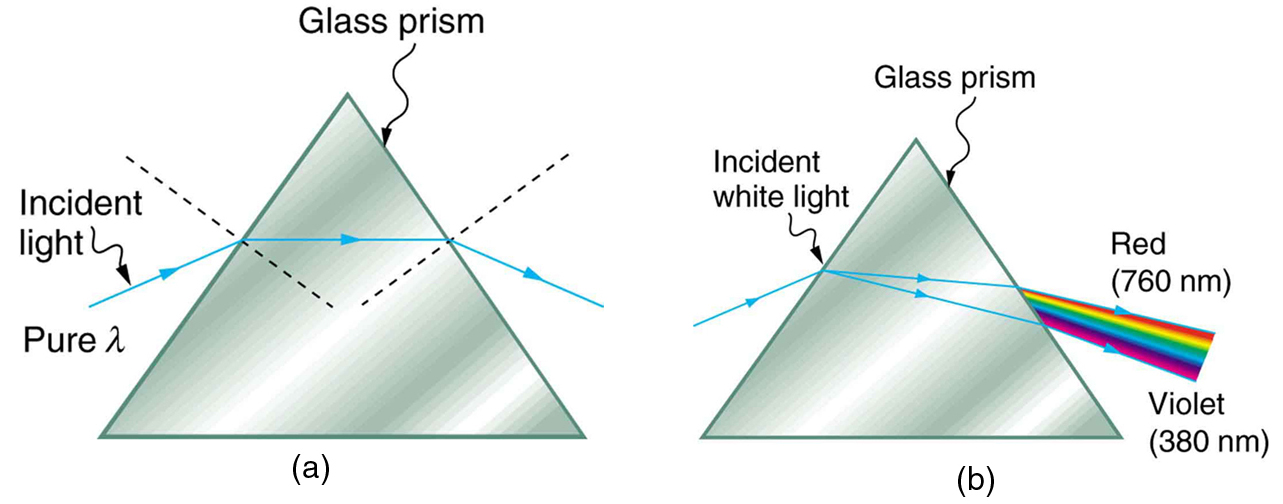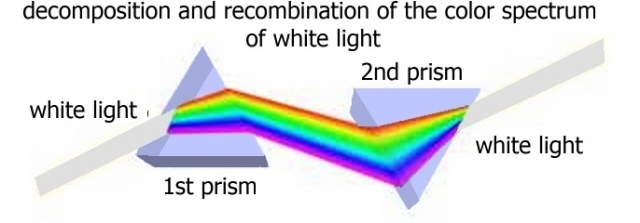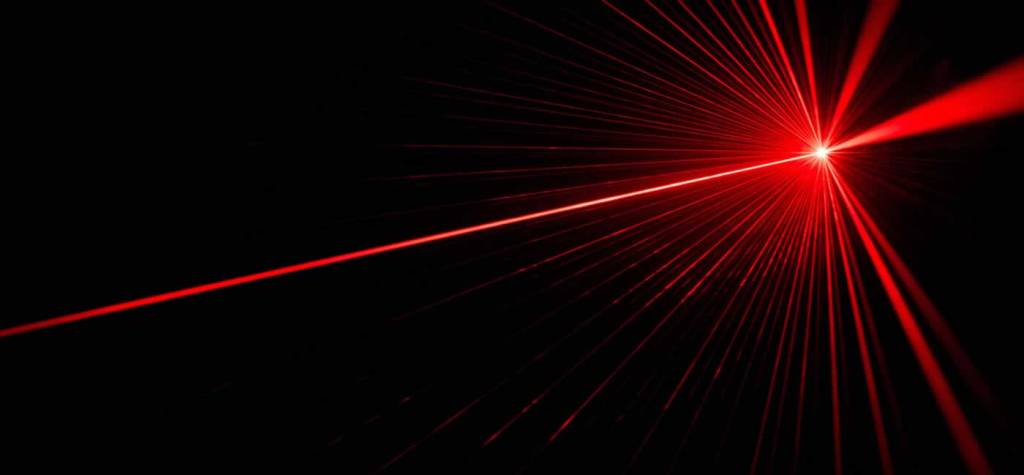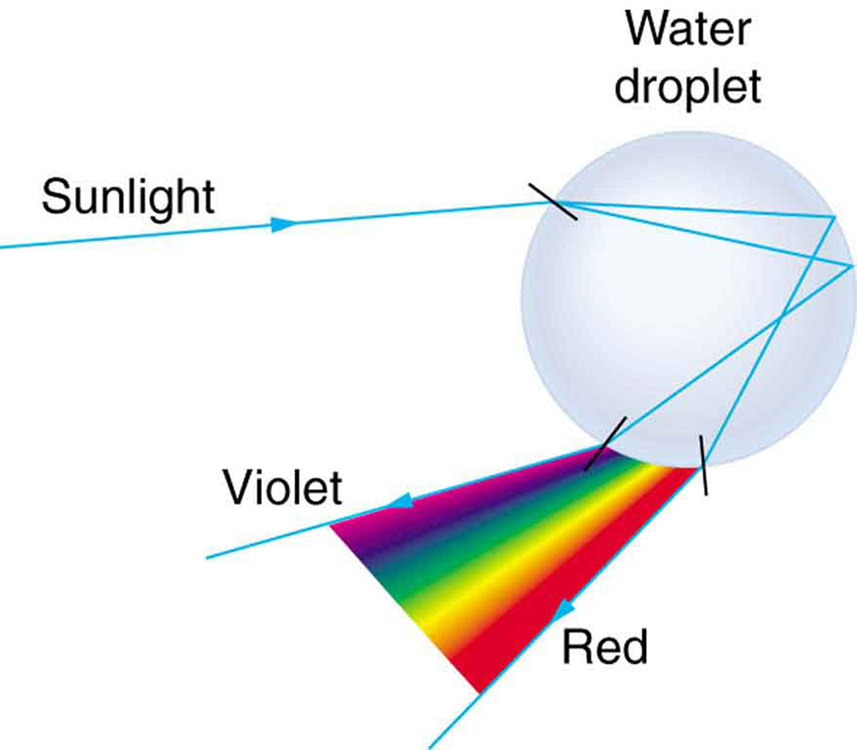Study Guide: Visible Light
Vocabulary
- Darkness
- Light
- Visible Light
- Refraction
- Dispersion
- Angle of Refraction
- Incidence of Refraction
- Prism
- Rainbow
- Laser
Light
Light is a form of invisible energy. Light energy can travel through transparent objects, and even through a vacuum such as outer space.
Our eyes can see visible light, but we can only see light at its source, and when it bounces off of an object. The sky looks blue to us during the day because light energy from the sun is bouncing off of dust and vapor in the atmosphere. If there were no atmosphere, the sky would look black.
Sunlight is a mixture of many colors. Light from the sun looks white to our eyes because it is an even mix of all the visible colors. In other words, when our eyes receive all the visible colors at once, our mind perceives this mixture as white light.
Seeing Color
When our eyes receive a pure wavelength of light, we see one color. The thousands of other hues we can see are our eye’s and mind’s response to seeing a mixture of different wavelengths at the same time.
Sunlight, which we usually think of as white light, actually appears a little bit yellow because there is a large amount of the yellow wavelengths in sunlight.
Refraction and Dispersion
Dispersion is the spreading of white light into its full spectrum of wavelengths (or colors).
Refraction causes dispersion of light in rainbows, prisms, and many other situations.
The angle of refraction (or index of refraction) depends on the specific wavelength (or color) and the kind of medium (the material the light energy is passing through).
The angle of refraction increases as wavelength get smaller. Violet light has the smallest wavelengths of the visible colors, and so it is bent the most. Red light has the longest wavelengths of visible light, and so it is bend the least.
Prisms
To see all the colors separately, we can use a prism. A prism is a piece of glass or plastic in the shape of a triangle. A prism works because the different colors of light travel at different angles as they pass though the edge of the glass. Violet so it is on the bottom and red travels the fastest so is on the top. When the air is full of water vapor, such as after a rainstorm, the water droplets act like millions of tiny prisms, and together can create the illusion we call a rainbow.
Question: There are many kinds of light. Where does bad light go?
Newton’s Light Experiment
In a famous experiment, Newton used two prisms to prove that white light is made of different colors. He used one prism to separate a beam of while light into separate colors, and then a second prism to recombine those colors back into a single beam of white light.
Lasers
Question: Why does light from a laser not separate into different colors when it passes through a prism?
Rainbows
Rainbows are formed when white light is refracted as it passes through millions of raindrops. The colors of the rainbow in order are: red, orange, yellow, green, blue, indigo, and violet. The colors become separated because each color refracts at a different angle.
Make a Rainbow
- Go outside on a sunny day, an hour or two before or after noon with your back to the sun.
- Adjust the nozzle on a garden hose to produce a fine mist spray.
- Spray a large mist against a dark background, such as a tall hedge or tree trunk. You should see all the colors of the visible spectrum through the mist, from red to violet.
This experiment demonstrates how light waves bend as they are refracted by water. Each drop in the mist produces a small refraction. Each color bends at a specific angle, allowing us see each color individually. The effect of all the drops together creates the optical illusion that we call reanbows.




